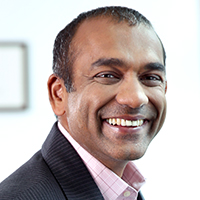The Singapore government’s $8 billion worth of measures came on the back of Singapore reporting its worst quarterly contraction on record with GDP shrinking 13.2 per cent from a year earlier. This package is intended to support jobs and create new ones, provide support for the hardest hit sectors and position the economy for future growth in this new normal.
One difference between this latest package the and the four prior budgets is that this one is not drawing down the strategic reserves but a reallocation of funds from projects that have been delayed due to COVID19. This is an important distinction that the government is signalling that hopefully they do not need to draw down anymore and they are looking ahead to economic growth and not another stimulus.
Pragmatism at its best
Many countries are trying to figure out how best to move to the next phase and are taking different approaches. Some are even split politically, thus stalling any federal action. For example in the United States, the Democrats believe that they should keep giving citizens money to stop them from going to work while the Republicans want to force workers to return by not giving them anything.
As Singapore takes baby steps towards reopening, it is also served a cautionary tale by others who have tried and failed. The most recent example is New Zealand which reopened its economy after being COVID19-free for 100 days only to have it flare up again. Others that have experienced a second wave of infections include Hong Kong, South Korea and Germany. There is simply no room for complacency.
In this fluid situation, the Singapore government is considered in its plan on how to incentivise employers and workers to quickly guide the economy out of this COVID-19 recession. It is a practical approach to get Singapore back on its feet. While the partisan politics in the US weighs welfare against a more ruthless approach, Singapore is aiming to strike a balance between unemployment and employment benefits.
The nation’s stance is more about who is the right person that can be sent back to work quickly, considering factors such as age, reskillability, upskillability, and the ability to find jobs, versus others who need more protection and support. Understanding better the nature of the virus and who is more susceptible, the government is taking active steps to enable employers and employees, especially Singaporeans, to play their part in nation building to the safest extent possible.
The multiplier effect
Deputy Prime Minister Heng Swee Keat laid out a very detailed plan that classifies industries into three tiers based on the projected recovery of that industry. The classification allows the job support funding towards the most vulnerable industries and allow the industries that have been recovering to slowly remove the support. As an economist, this shows that the government makes policy based on data and not ideology.
His plan also acknowledges and critical help needed by the aerospace, aviation, tourism and built environment sectors. The measures include an additional $187 million for the aviation sector, redeployment of workers to other areas of need, and $320 million in tourism credits to spur domestic tourism. The added support will boost the confidence of investors and domestic consumers in Singapore. Success in propping these industries will stimulate employment and consumption in other sectors consequentially.
A multi-billion dedication to its people
There is no doubt that times are tough and are looking to get worse. Recognising this, Singapore has dedicated over S$100 billion in the last six months to help residents tide over this turbulent time.
Yes, there is uncertainty and anxiety. No one knows whether the measures will succeed or whether opening the economy will cause a second wave of infections.
The government has done its part to prime its people for the new normal. From a social perspective, it has taken stringent steps to help its residents form new habits such as temperature taking and mask wearing. Economically, it has injected billions to help those in need and at risk in the fairest way possible.
Now, it is over to the folks who call this nation home to take things forward.




